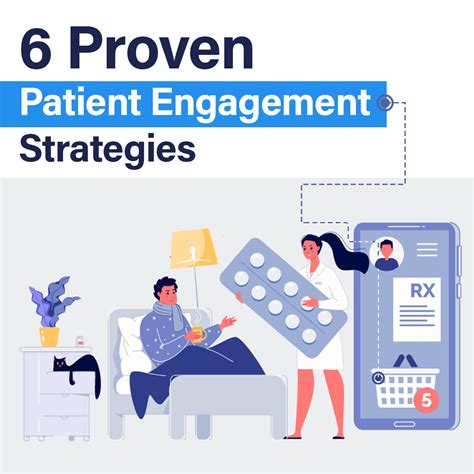Intro
Discover the 5 uses of Clopidogrel 75mg, a blood thinner medication, including preventing heart attacks, strokes, and blood clots, while managing conditions like coronary artery disease, peripheral artery disease, and acute coronary syndrome.
Clopidogrel, commonly known by its brand name Plavix, is a medication that has been widely used to prevent blood clots in patients at risk for heart disease and stroke. The 75mg dosage is one of the most frequently prescribed strengths, and its applications are varied and critical in managing cardiovascular health. The importance of understanding the role of clopidogrel 75mg cannot be overstated, given its potential to significantly reduce the risk of major adverse cardiac events. This knowledge is not only crucial for healthcare professionals but also for patients who are prescribed this medication, as it empowers them to take an active role in their health management.
The mechanism through which clopidogrel exerts its effects is by inhibiting the activation of platelets, which are small blood cells that play a key role in the formation of blood clots. By preventing platelets from aggregating, clopidogrel reduces the risk of clot formation, which can lead to heart attacks and strokes. This antiplatelet effect is what makes clopidogrel 75mg so valuable in the prevention and management of cardiovascular diseases. Moreover, the dosage of 75mg is often considered optimal for balancing efficacy with the risk of side effects, making it a preferred choice for long-term management.
The applications of clopidogrel 75mg are diverse and include the prevention of myocardial infarction (heart attack) in patients with a history of myocardial infarction, the reduction of the risk of stroke in patients with a history of stroke or transient ischemic attack (TIA), and the prevention of stent thrombosis in patients who have undergone coronary artery stenting. Its use is also considered in patients with peripheral artery disease, as it can help reduce the risk of clot formation in the arteries outside the heart and brain. Understanding these applications is essential for both healthcare providers and patients, as it highlights the critical role that clopidogrel 75mg plays in managing and preventing serious cardiovascular events.
Benefits of Clopidogrel 75mg

The benefits of clopidogrel 75mg are multifaceted and significant. Firstly, its ability to reduce the risk of heart attack and stroke makes it a lifesaving medication for many patients. Secondly, its efficacy in preventing stent thrombosis has revolutionized the outcomes of coronary artery stenting procedures, allowing more patients to undergo these lifesaving interventions with confidence. Additionally, clopidogrel 75mg has been shown to be effective in a wide range of patients, including those with diabetes and those who are at high risk for cardiovascular events.
Key Mechanisms and Effects
The key to clopidogrel's effectiveness lies in its mechanism of action, which involves the irreversible inhibition of the P2Y12 receptor on platelets. This receptor plays a crucial role in platelet activation and aggregation, processes that are fundamental to the formation of blood clots. By inhibiting this receptor, clopidogrel prevents platelets from clumping together, thereby reducing the risk of clot formation. This effect is long-lasting, as the inhibition is irreversible and platelets are inhibited for their entire lifespan, which is typically about 7 to 10 days.Working Mechanism of Clopidogrel 75mg

The working mechanism of clopidogrel 75mg is complex and involves several steps. Initially, clopidogrel is absorbed from the gastrointestinal tract and then metabolized in the liver to its active form. This active metabolite then binds to the P2Y12 receptor on platelets, leading to its irreversible inhibition. As a result, platelets are unable to aggregate, which significantly reduces the risk of blood clot formation. The onset of action of clopidogrel is relatively slow, taking several hours to achieve its full effect, which is why a loading dose is often administered to rapidly achieve therapeutic levels.
Steps for Administration
For the administration of clopidogrel 75mg, patients are typically advised to take one tablet daily, with or without food. It is crucial to follow the prescribed dosage and not to stop taking the medication without consulting a healthcare provider, as this can increase the risk of adverse cardiac events. In cases where a patient misses a dose, they should take the missed dose as soon as possible, unless it is close to the time for the next dose, in which case they should skip the missed dose and continue with their regular dosing schedule.Practical Examples and Statistical Data

Practical examples of the effectiveness of clopidogrel 75mg can be seen in various clinical trials and real-world studies. For instance, the CAPRIE study, which compared clopidogrel with aspirin in patients at risk for ischemic events, found that clopidogrel had a marginally but significantly greater benefit than aspirin in reducing the combined risk of ischemic stroke, myocardial infarction, or vascular death. Statistical data from such studies underscore the importance of clopidogrel 75mg in the management of cardiovascular diseases, highlighting its potential to improve outcomes and reduce morbidity and mortality.
Benefits and Risks
While clopidogrel 75mg offers significant benefits in terms of reducing the risk of cardiovascular events, it is not without risks. The most common side effects include bleeding, which can range from mild (such as bruising) to severe (such as intracranial hemorrhage). Other potential side effects include gastrointestinal upset, rash, and liver enzyme elevations. The benefits and risks of clopidogrel 75mg must be carefully weighed for each patient, taking into consideration their individual risk factors for cardiovascular disease and their risk for adverse effects.Steps to Manage Side Effects

To manage side effects associated with clopidogrel 75mg, patients are advised to monitor their condition closely and report any unusual symptoms to their healthcare provider. For bleeding side effects, this may involve regular monitoring of bleeding times and adjustment of the dosage or addition of other medications to manage bleeding risk. Lifestyle modifications, such as avoiding alcohol and certain medications that can increase the risk of bleeding, are also recommended. In cases of severe side effects, immediate medical attention is necessary.
Conclusion and Future Directions
In conclusion, clopidogrel 75mg plays a critical role in the prevention and management of cardiovascular diseases. Its ability to reduce the risk of heart attack and stroke, as well as its efficacy in preventing stent thrombosis, makes it a valuable medication for patients at risk for these events. As research continues to uncover new aspects of clopidogrel's mechanism of action and its applications, it is likely that its use will evolve, potentially leading to even better outcomes for patients.Encouraging Patient Engagement

Encouraging patient engagement and education about clopidogrel 75mg is crucial for its effective use. Patients should be informed about the benefits and risks, as well as the importance of adherence to their prescribed regimen. By empowering patients with knowledge, healthcare providers can improve outcomes and reduce the risk of complications. Patients are encouraged to ask questions, discuss concerns, and seek clarification on any aspects of their treatment with clopidogrel 75mg.
What is the primary use of clopidogrel 75mg?
+Clopidogrel 75mg is primarily used to prevent blood clots in patients at risk for heart disease and stroke, including those with a history of myocardial infarction, stroke, or peripheral artery disease.
How does clopidogrel 75mg work?
+Clopidogrel 75mg works by inhibiting the activation of platelets, which are small blood cells that play a key role in the formation of blood clots, thereby reducing the risk of clot formation.
What are the common side effects of clopidogrel 75mg?
+The common side effects of clopidogrel 75mg include bleeding, gastrointestinal upset, rash, and liver enzyme elevations. Patients should monitor their condition closely and report any unusual symptoms to their healthcare provider.
We invite readers to share their experiences or ask questions about clopidogrel 75mg in the comments below. Your engagement and feedback are invaluable in helping us provide the most accurate and helpful information. Additionally, we encourage you to share this article with anyone who might benefit from understanding the role of clopidogrel 75mg in managing cardiovascular health. Together, we can empower more individuals to take an active role in their health management and improve outcomes for those at risk for cardiovascular diseases.
